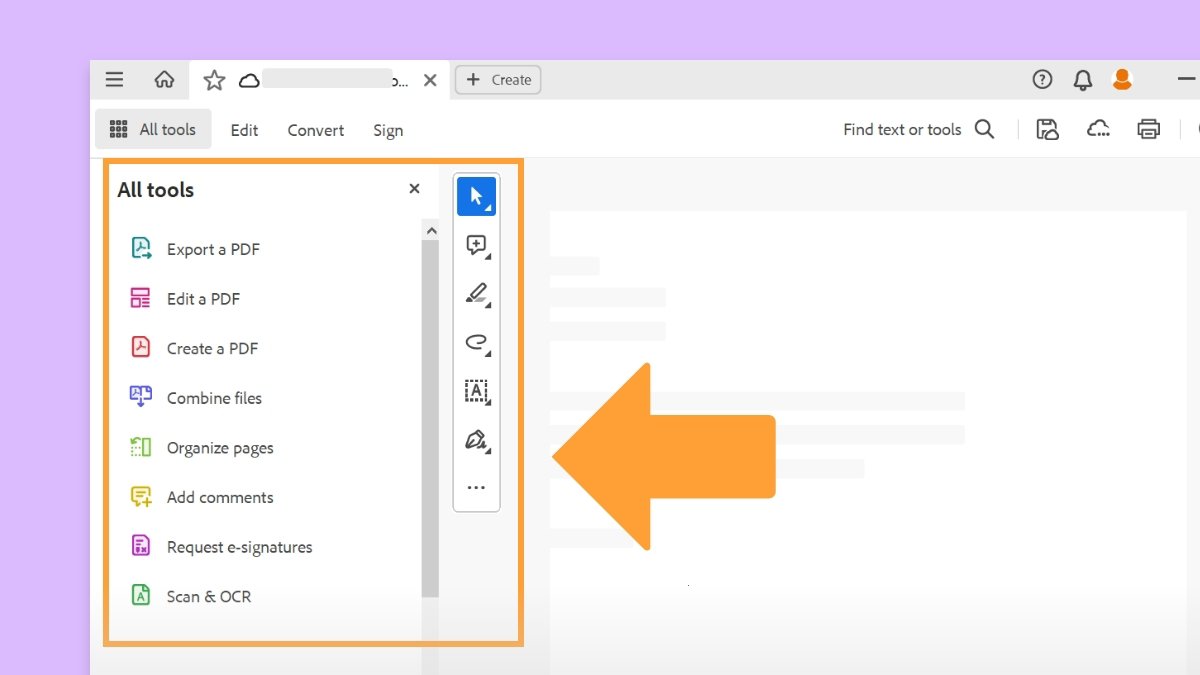Before you begin
We're rolling out a new, more intuitive product experience. If the screen shown here doesn’t match your product interface, select help for your current experience.
Learn how to use the 3D Measurement Tool to measure 3D models in PDFs by creating measurements between points or edges of the model.
Before you begin
We're rolling out a new, more intuitive product experience. If the screen shown here doesn’t match your product interface, select help for your current experience.


The 3D Measurement Tool enables you to measure four types of measurements, including the perpendicular distance between two straight edges, the linear distance between two points, the radius of circular edges, and the angle between two edges (or three points).


To begin measuring a 3D model in a PDF, you need to select the 3D model to render it for tools.
Access the 3D toolbar by right-clicking on the 3D object and selecting Show Toolbar. If the 3D toolbar view is set for consolidated tools, select the 3D Measurement Tool ![]() from the pop-up menu next to the Navigation Tool.
from the pop-up menu next to the Navigation Tool.
Select the 3D Measurement Tool icon that appears on the 3D toolbar. This will enable Snap Enables and Measurement Types.
Select the options you want in the Snap Enables and Measurement Types toolbar.
Right-click the model background, and change the options as needed. Keep the 3D Measurement Tool palette open.
To learn how to rotate, pan, zoom, and snap while you measure, right-click the model and select 3D Measurement Navigation Tips.
|
3D Snap To Edge Endpoints |
Snaps to the entire edge. |
|
3D Snap To Linear Edges |
Snaps to a straight-line segment of an edge. |
|
3D Snap To Radial Edges |
Snaps to a circumference. |
|
3D Snap to Silhouettes |
Snaps to the apparent edge of a part, such as the side of a cylinder. |
|
3D Snap To Planar Faces |
Snaps to the geometric plane making up a face of the part. |
|
3D Point To Point Measurement
|
Measures the distance between two positions on the 3D model. Click to set a start point, and then click another location to set an end point or edge. |
|
3D Perpendicular Dimension |
Measures the distance between two edges taken at a right angle to the starting edge. |
|
3D Radial Dimension
|
Measures the radius at the location clicked. |
|
3D Angle Measurement |
Measures the angle between two edges. |
To use the Units and Markup measurement tools, select the 3D Measurement Tool, and then right-click inside the 3D model. Then go to Preferences to find these:
|
Define Model Units |
Select to change the measurement units. |
|---|---|
|
Enable Coordinate Display |
Displays or hides the coordinates of the mouse pointer location in the Measurement Info Window. |
|
Change Markup Label |
Type the text that you want to appear with the measurement, both in the 3D model area and in the Comments panel. (Not available if Measurement Markup is not selected.) |
|
Disable Measurement Markup |
Select when you want to take measurements in a model, but not add them to the document. The measurements are only visible while the current measurement is active. If you start another measurement or change tools, the markup disappears. |
|
Don't Snap To 3D Content |
Disables the ability to snap the insertion point to a likely target. Select this option to improve performance when you are working with a large model. Return to Snap To 3D Content to ensure precise measurement in 3D objects. |
|
3D Measurement Navigation Tips |
Opens a dialog box that lists the keyboard shortcuts for several navigation shorts. You can use these shortcuts while you are measuring. |
|
Preferences |
Opens the Measuring (3D) Preferences dialog box. |
|
Hide/Show Measurement Info Window |
The Measurement Info Window displays the Units And Markup settings for the model. Select to remove the window from the model window. |
|
Hide/Show Measurement Toolbar |
Removes/displays the 3D Measurement Tool palette. |
Change the 3D Measuring preferences to determine how 3D data is measured. To access these options, press Command + K to open Preferences, and go to the Measuring (3D) panel.
In Adobe Acrobat Reader, these preferences apply to PDFs that have commenting enabled.
|
Use Scales and Units from Model (when present) |
Displays measurements based on the model units, if present, generated from the original 3D model. Deselect this option to specify the units of measurements manually. This setting can be changed in the 3D Measurement Tool palette. |
|
Use default display unit |
Uses units of measurement that you specify here rather than the measurement units in the 3D model. |
|
Significant Digits to Display |
Specifies the maximum number of digits in the measurement number. |
|
3D Measuring Line Color |
Specifies the color of the line that appears when you click or drag to measure an object. |
|
Measure Feedback Size |
Sets the text size for the measurement display. |
|
Angular Measurements Shown In |
Specifies units as either degrees or radians. |
|
Circular Measurements Shown As |
Designates whether the diameter or radius is measured for circular parts. |
|
Show Circle for Radial Measurements |
Displays the circumference associated with the radial measurement. |
|
3D Snap Settings |
Turns on snap and specifies whether points, arcs, edges, silhouette edges, or faces are snapped to. Sensitivity indicates how close the pointer must be to the item being snapped to. For Snap Hint Color, specify the color of the snap line that appears when you hold the pointer over the 3D object. |
Work smarter with Acrobat on your desktop
Create, edit, and organize PDFs with powerful tools that help you stay productive anywhere.